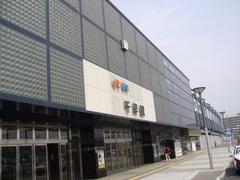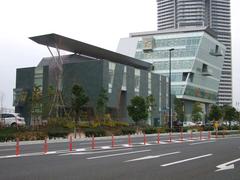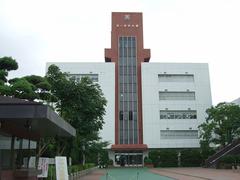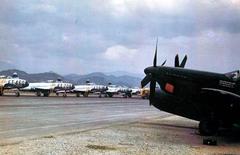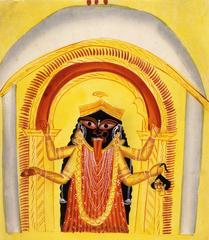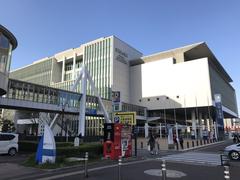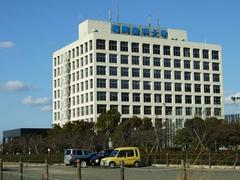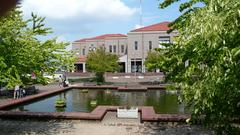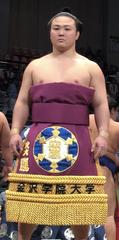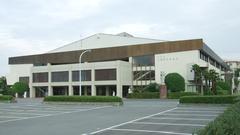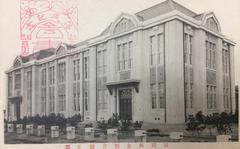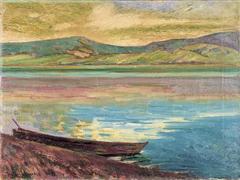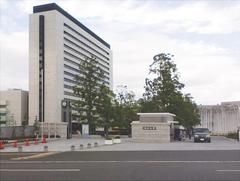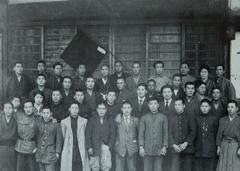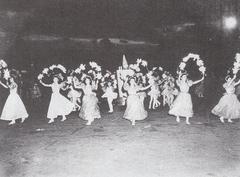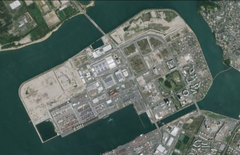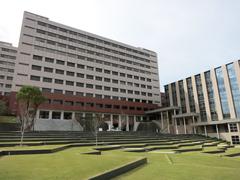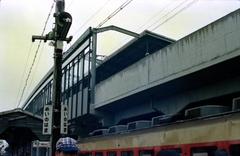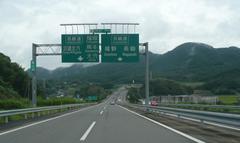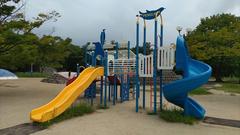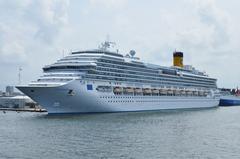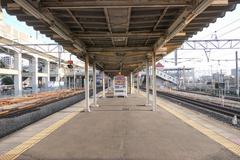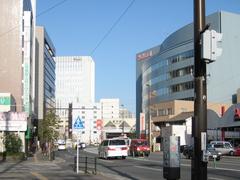Shōwa Dōri Visiting Hours, Tickets, and Fukuoka Historical Sites Guide
Date: 04/07/2025
Introduction
Shōwa Dōri in Fukuoka, Japan, is a dynamic boulevard that seamlessly connects the city’s history with its modern vibrancy. Designed during the early Shōwa period as part of Fukuoka’s urban modernization, it has grown from a planned thoroughfare into a bustling center of commerce, culture, and community. Today, Shōwa Dōri links major districts such as Hakata and Tenjin, offering visitors access to significant historical sites, renowned food stalls (yatai), and some of the city’s most celebrated festivals (Medium). This guide provides details on Shōwa Dōri’s history, cultural significance, visiting logistics, and recommendations for top attractions and experiences.
Table of Contents
- Historical Overview and Urban Development
- Planning and Construction
- Postwar Growth and Modernization
- Cultural and Social Significance
- Visitor Logistics: Hours, Tickets, and Tours
- Accessibility and Practical Tips
- Key Attractions and Experiences
- Major Festivals and Seasonal Events
- Frequently Asked Questions (FAQ)
- Conclusion
- References and Further Reading
Historical Overview and Urban Development
Shōwa Dōri’s origins are rooted in Fukuoka’s rapid modernization in the early 20th century. Drawing inspiration from Western city planning—especially after the 1923 Great Kantō Earthquake—Fukuoka’s urban visionaries saw the need for wide, safe, and modern boulevards. Shōwa Dōri was conceived not only to facilitate traffic and urban growth but also to serve as a social and cultural artery, reflecting the city’s transformation from a traditional port town into a thriving metropolis (Medium).
Planning and Construction
During the early Shōwa era (1926–1989), Fukuoka’s planners envisioned Shōwa Dōri as a grand boulevard, originally planned at 108 meters wide but ultimately built at 44 meters—still remarkably spacious compared to older streets. This width allowed for tree-lined sidewalks, multiple traffic lanes, and dedicated spaces for pedestrians and cyclists. Completed in 1928, Shōwa Dōri quickly became the backbone for east-west movement, linking Hakata and Tenjin districts and facilitating access to key transportation hubs (Medium).
Postwar Growth and Modernization
The post-World War II era brought rapid urban expansion. Shōwa Dōri’s wide design accommodated the rise of automobiles, public transportation, and increased pedestrian activity. Its centrality made it a commercial hotspot, with department stores, offices, and hotels flourishing along its length. The boulevard also became a favored route for parades and public celebrations (chengshi-jp.com).
Modernization initiatives in the late 20th and early 21st centuries focused on enhancing quality of life and sustainability. Projects included improved lighting, expanded sidewalks, additional green spaces, and the adoption of smart city technologies to promote efficient transit and environmental sustainability (World Bank).
Cultural and Social Significance
Shōwa Dōri is not just a transportation artery—it is the stage for Fukuoka’s vibrant cultural life. Each year, it hosts major festivals such as the Hakata Gion Yamakasa, recognized by UNESCO for its importance. The boulevard’s wide sidewalks and central location make it a popular venue for parades, street performances, and seasonal illuminations. Along its route, visitors encounter a blend of historic architecture, contemporary design, and public art, mirroring Fukuoka’s layered identity (Japan Travel; Go Fukuoka).
Visitor Logistics: Hours, Tickets, and Tours
- Accessibility: Shōwa Dōri is a public street open 24/7. Its wide, flat sidewalks and accessible crossings make it suitable for all visitors, including those with disabilities and families with strollers.
- Attraction Hours: While Shōwa Dōri itself is always open, nearby attractions such as parks, shrines, and museums typically operate between 9:00 AM and 6:00 PM. Yatai food stalls generally open at sunset and run until late.
- Tickets: There is no fee to walk along Shōwa Dōri. Some cultural sites, museums, and events may require tickets—these can often be purchased on-site or via official websites.
- Guided Tours: Multiple local operators provide guided walking tours focusing on Shōwa Dōri’s history, festivals, and surrounding historical sites. Advance booking is advised, especially during festival seasons.
- Transportation: Shōwa Dōri is easily reached via Hakata and Tenjin subway stations, with frequent bus routes running along the boulevard. Bike rentals are also available for those who prefer a leisurely ride (Visit Inside Japan).
Accessibility and Practical Tips
- Parking: Limited street parking is available, but several paid garages and Hakata Station parking facilities are within walking distance.
- Events: Check official event calendars for up-to-date information on festivals, parades, and illuminations (Go Fukuoka).
- Dining: Many eateries and yatai accept only cash; carry small bills and coins.
- Language: English signage is common in tourist areas, but learning basic Japanese greetings will enhance your interactions.
- Etiquette: Follow local customs at shrines and during festivals—bow at torii gates, keep conversations respectful, and observe posted guidelines.
Key Attractions and Experiences Along Shōwa Dōri
Fukuoka Castle Ruins & Maizuru Park
A short walk from Shōwa Dōri, the Fukuoka Castle Ruins offer a window into the city’s feudal past. Maizuru Park, adjacent to the castle, is celebrated for cherry blossoms in spring and sweeping city views. Open year-round, free admission (Japan Switch).
Ohori Park
Directly south of Shōwa Dōri, Ohori Park offers a peaceful escape with its central pond, Japanese garden, and Noh theater. Open from 5:00 AM to 10:00 PM, admission is free; boat rentals are available seasonally (Japan Switch).
Canal City Hakata
A massive shopping and entertainment complex, Canal City Hakata features over 250 stores, restaurants, theaters, and nightly fountain shows. Open daily from 10:00 AM to 9:00 PM (Japan Switch).
Kushida Shrine
One of Fukuoka’s oldest shrines, Kushida is central to the Hakata Gion Yamakasa festival. Open daily from 6:00 AM to 6:00 PM, free admission for general visits (Framey).
Nakagawa River Promenade
Parallel to Shōwa Dōri, this promenade offers scenic walks, historic bridges, and seasonal river cruises (¥1,000–¥2,000; advance reservations recommended) (Crossroad Fukuoka).
Yatai Food Stalls
The area around Shōwa Dōri is famous for yatai—open-air stalls serving Hakata ramen, yakitori, and other local specialties. Open evenings until late night (Go Fukuoka).
Major Festivals and Seasonal Events
- Hakata Gion Yamakasa: July 1–15. Teams race massive floats through the streets, with the main event running through Shōwa Dōri (Japan Travel).
- Hakata Dontaku Festival: Early May. Parades, performances, and food stalls line the streets (Japan Activity).
- Summer Fireworks and Wind Bell Festivals: Free events with vibrant displays and traditional music (Crossroad Fukuoka).
- Autumn and Winter Illuminations: Seasonal light displays and Christmas markets from late November through December (Japan Switch).
Frequently Asked Questions (FAQ)
Q: Is Shōwa Dōri accessible for wheelchair users?
A: Yes, with ramps, smooth sidewalks, and accessible crossings.
Q: Do I need tickets to visit Shōwa Dōri or attend festivals?
A: Shōwa Dōri itself is free to access. Some events, exhibitions, or cruises may require tickets.
Q: When is the best time to visit?
A: Spring (cherry blossoms), early May (Dontaku Festival), and mid-July (Yamakasa Festival) are especially recommended.
Q: Are guided tours available?
A: Yes, book in advance with local operators.
Conclusion
Shōwa Dōri stands as a testament to Fukuoka’s history, modernity, and cultural vitality. From its origins as a model of urban planning to its role as a vibrant festival venue, the boulevard offers something for every traveler. Stroll its tree-lined sidewalks, sample street food, explore historical sites, or join the city in celebration at one of its many festivals. For personalized tips and updates, download the Audiala app and consult local tourism resources (Go Fukuoka, Visit Inside Japan).
References and Further Reading
- Medium: Exploring Shōwa Dōri in Fukuoka: History, Visitor Info, and Nearby Attractions
- Japan Travel: Shōwa Dōri Fukuoka: Visiting Hours, Festivals, and Historical Attractions
- Visit Inside Japan
- Go Fukuoka
- chengshi-jp.com: Background to the Master Plan of Fukuoka City
- World Bank: Fukuoka Smart City Initiatives
- Japan Switch: Things to Do in Fukuoka
- Framey: 15 of the Best Attractions and Things to Do in Fukuoka, Japan
- Crossroad Fukuoka
- Japan Activity: Fukuoka Events
- Over Your Place: Fukuoka Culture, History, Customs, Festivals
- matcha-jp.com: Fukuoka Travel Guide
